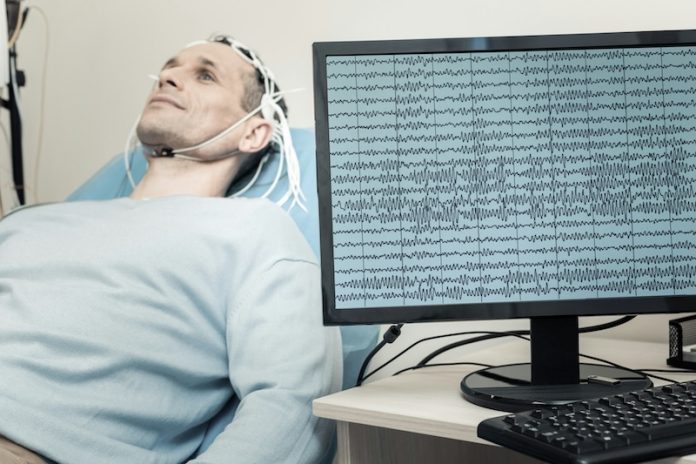
A research team from UCLA Health has identified changes in brain rhythms that signal seizure activity in Alzheimer’s patients. These findings, published in Brain Communications, build on earlier work by Dr. Keith Vossel, a UCLA neurologist who first linked silent seizures to faster cognitive decline in Alzheimer’s disease.
The Hidden Link Between Seizures and Alzheimer’s
Seizures are not commonly associated with Alzheimer’s, but Dr. Vossel’s previous research revealed that they are more common than previously thought. His studies found that:
- More than 40% of Alzheimer’s patients have silent seizures (which do not cause visible symptoms).
- 20% of Alzheimer’s patients experience overt seizures (which have noticeable symptoms).
- Both silent and overt seizures speed up cognitive decline in Alzheimer’s patients.
This latest study aimed to better understand these seizures by analyzing high-frequency oscillations (HFOs)—fast bursts of brain activity known as markers of epilepsy.
How Researchers Identified Seizure Activity
The study, led by Dr. M.C. Vishnu Shandilya, Dr. Richard Staba, and researchers from UCSF, used two types of brain imaging:
- Electroencephalography (EEG) – A widely used tool for detecting seizures.
- Magnetoencephalography (MEG) – A more advanced brain imaging method that detects magnetic signals from brain activity.
The researchers found that HFOs occurred 2 to 3 times more frequently in Alzheimer’s patients than in people without the disease. They also discovered that:
- MEG was more effective than EEG at detecting these seizure-related brain rhythms.
- HFOs were more frequent on the right side of the brain in Alzheimer’s patients who had seizure activity.
- HFOs that occurred alongside epileptic spikes were reduced by the antiseizure drug levetiracetam (based on data from Vossel’s previous clinical trials).
A New Tool for Detecting Seizures in Alzheimer’s
These findings suggest that HFOs could serve as a biomarker—a measurable sign that helps doctors identify which Alzheimer’s patients are at higher risk for seizures.
Dr. Vossel emphasized the practical benefits of this discovery:
“Encouragingly, MEG screening for HFOs takes just 10 minutes, offering a practical and efficient way to identify Alzheimer’s patients at higher risk of epileptic activity.”
This means that a quick MEG scan could help doctors identify Alzheimer’s patients who may benefit from antiseizure treatments before their cognitive decline worsens.
Could Treating Seizures Help Alzheimer’s Patients?
Dr. Vossel’s earlier research showed that low doses of the antiseizure drug levetiracetam can improve memory and problem-solving skills in Alzheimer’s patients who experience epileptic activity.
This suggests that early detection and treatment of seizures could help slow cognitive decline in Alzheimer’s patients. A simple 10-minute MEG scan could make it easier to identify those who might benefit from this treatment, improving their quality of life and reducing healthcare costs.
Future Research
These results provide a new way to monitor brain activity in Alzheimer’s patients, but larger studies are needed to fully understand the impact of treating seizure activity in Alzheimer’s.
If future research confirms these findings, routine MEG screening could become a valuable tool in Alzheimer’s care, helping doctors better manage the disease and potentially slow its progression.
If you care about brain health, please read studies about vitamin D deficiency linked to Alzheimer’s and vascular dementia, and higher magnesium intake could help benefit brain health.
For more information about brain health, please see recent studies about antioxidants that could help reduce dementia risk, and coconut oil could help improve cognitive function in Alzheimer’s.
The research findings can be found in Brain Communications.
Copyright © 2025 Knowridge Science Report. All rights reserved.



